Nitin Choudhari & Dinesh Y. Dhande
Abstract
자동차 산업에서 알루미늄 주조는 구조적 구성 요소에 일반적으로 사용되는 생산 공정입니다. 그러나 알루미늄 주조의 결함은 피로 파괴로 이어질 수 있습니다. 이 연구 조사는 알루미늄 다이캐스트(HPDC)로 만든 스윙 암의 설계, 개발, 구성 및 테스트에 대한 철저한 분석을 제공합니다. 이 조사는 주로 기공 길이, 응고 시간, 핫스팟 분포 및 수축 기공 강도와 같은 요인을 철저히 조사하여 스윙 암의 응고 거동을 분석하는 데 중점을 둡니다. 상용 시뮬레이션 소프트웨어인 Magma 5를 사용하여 관찰된 오류를 해결하기 위해 설계 수정을 용이하게 했습니다. 설계 수정을 통해 응고 시간이 상당히 단축되어 이전에 식별된 균열 영역에서 핫스팟이 이동했습니다. 또한 기공 비율과 강도가 모두 상당히 감소했으며 이는 X선 및 CT 스캔 분석을 통해 확인되었습니다. 동력계로 내구성 테스트를 수행한 후 원래 설계와 비교했을 때 피로 수명이 50%나 크게 증가한 것을 발견했습니다.
이 연구는 HPDC 알루미늄 구조물의 피로 파괴를 해결하는 데 있어 초기 단계 시뮬레이션 기반 설계 조정의 중요성을 강조합니다. 8%를 초과하는 과도한 다공성 수준이 이 문제에 기여하는 주요 요인이라는 점이 확인되었습니다. 제안에는 다공성을 줄이기 위해 더 두꺼운 구조와 부품 설계의 복잡성을 피하는 것이 포함됩니다. 표면 근접성 및 구조적 응력 구역과 관련하여 결함의 위치를 고려하는 것도 중요합니다.
- Fig. 1
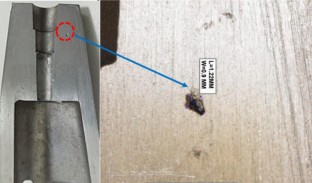 View in article
View in article - Fig. 2
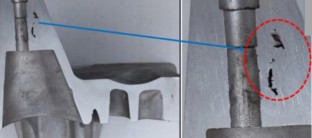 View in article
View in article - Fig. 3
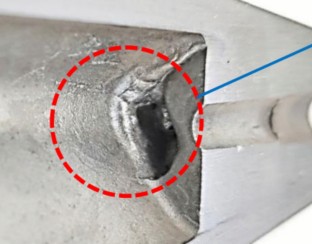 View in article
View in article - Fig. 4
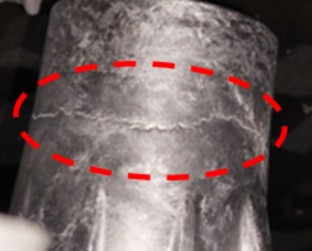 View in article
View in article - Fig. 5
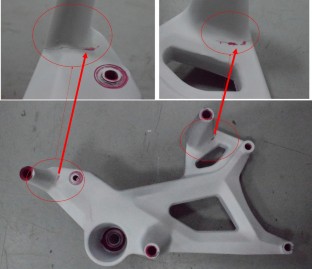 View in article
View in article - Fig. 6
 View in article
View in article - Fig. 7
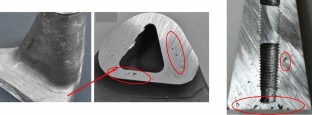 View in article
View in article - Fig. 8
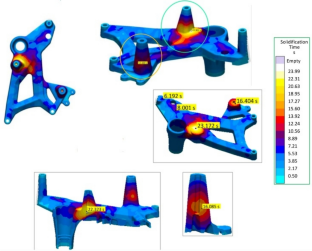 View in article
View in article - Fig. 9
 View in article
View in article - Fig. 10
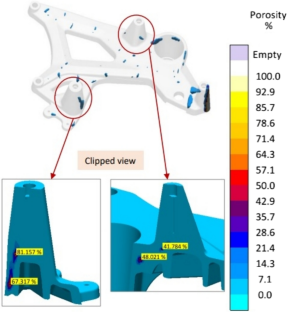 View in article
View in article - Fig. 11
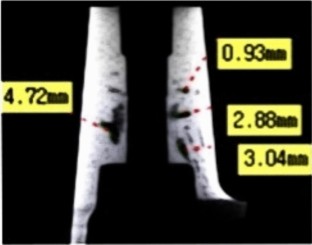 View in article
View in article - Fig. 12
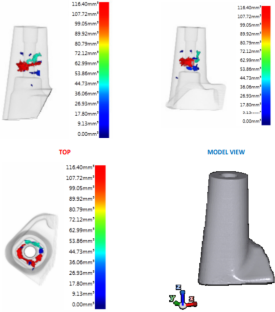 View in article
View in article - Fig. 13
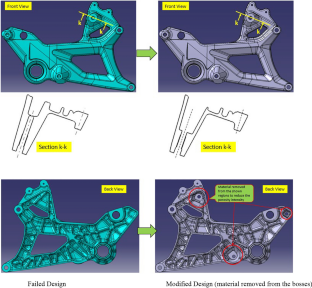 View in article
View in article - Fig. 14
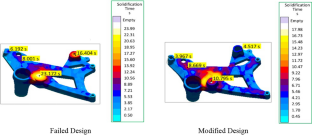 View in article
View in article - Fig. 15
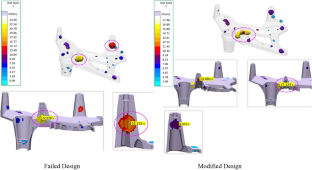 View in article
View in article - Fig. 16
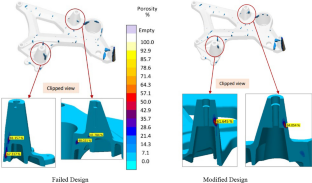 View in article
View in article - Fig. 17
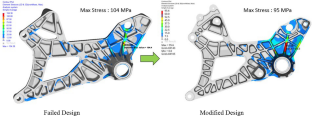 View in article
View in article - Fig. 18
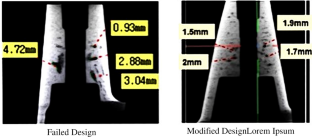 View in article
View in article - Fig. 19
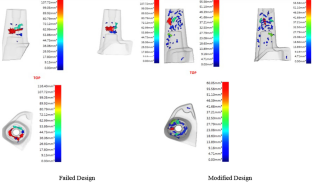 View in article
View in article - Fig. 20
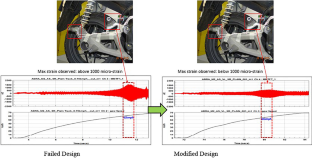 View in article
View in article - Fig. 21
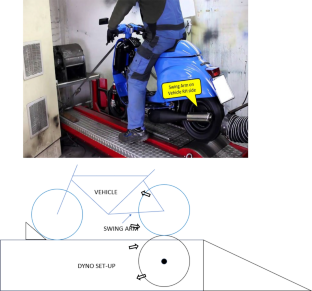 View in article
View in article - Fig. 22
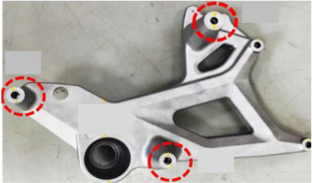
References
- Zolotorevskiĭ, Vadim Semenovich, et al. Casting Aluminum Alloys. 1st ed, Elsevier Science, Amsterdam, 2007
- Y. Li et al., Analysis of a diesel engine cylinder head failure caused by casting porosity defects’. Eng. Failure Anal. 127, 105498 (2021). https://doi.org/10.1016/j.engfailanal.2021.105498Article Google Scholar
- M. Tebaldini et al., Estimation of fatigue limit of a A356–T6 automotive wheel in presence of defects. Proced. Struct. Integr. 7, 521–529 (2017). https://doi.org/10.1016/j.prostr.2017.11.121Article Google Scholar
- N. Zhang et al., Parameter optimization of al-5mg-3zn-1cu basin-shaped centrifugal casting: simulation and experimental verification’. Inter. J. Metalcasting 17(2), 900–909 (2023). https://doi.org/10.1007/s40962-022-00822-9Article Google Scholar
- Bi, Jiang, et al. Process optimization of a356 aluminum alloy wheel hub fabricated by low-pressure die casting with simulation and experimental coupling Methods. Preprint, SSRN, 2023. https://doi.org/10.2139/ssrn.4365913
- M. Jolly, L. Katgerman, Modelling of defects in aluminium cast products. Prog. Mater. Sci.. Mater. Sci. 123, 100824 (2022). https://doi.org/10.1016/j.pmatsci.2021.100824Article Google Scholar
- S. Chakravarti, S. Sen, An investigation on the solidification and porosity prediction in aluminium casting process. J. Eng. Appl. Sci. 70(1), 21 (2023). https://doi.org/10.1186/s44147-023-00190-zArticle Google Scholar
- W. Dou et al., Fatigue characterization on a cast aluminum beam of a high-speed train through numerical simulation and experiments’. Chin. J. Mech. Eng. 34(1), 108 (2021). https://doi.org/10.1186/s10033-021-00628-6Article Google Scholar
- C. Lei et al., Magma software simulation assisted optimization of the casting system of turbocharger castings. Proced. Manuf. 37, 59–65 (2019). https://doi.org/10.1016/j.promfg.2019.12.013Article Google Scholar
- H. Cao et al., Kinetic analysis of pore formation in die-cast metals and influence of absolute pressure on porosity’. Vacuum 168, 108828 (2019). https://doi.org/10.1016/j.vacuum.2019.108828Article Google Scholar
- L. Patnaik et al., Die casting parameters and simulations for crankcase of automobile using magmasoft. Mater. Today: Proc. 22, 563–571 (2020). https://doi.org/10.1016/j.matpr.2019.08.208Article Google Scholar
- R.D. Pehlke, Computer simulation of solidification processes—the evolution of a technology. Metall. and Mater. Trans. A. 33(8), 2251–2273 (2002). https://doi.org/10.1007/s11661-002-0349-1Article Google Scholar
- I. Rajkumar, N. Rajini, Metal casting modeling software for small scale enterprises to improve efficacy and accuracy. Mater. Today: Proc. 46, 7866–7870 (2021). https://doi.org/10.1016/j.matpr.2021.02.542Article Google Scholar
- J.-f Jiang et al., Numerical simulation of squeeze casting of aluminum alloy flywheel housing with large wall thickness difference and complex shape. Trans. Nonferrous Metals Society China 33(5), 1345–1360 (2023). https://doi.org/10.1016/S1003-6326(23)66187-4Article Google Scholar
- Y. Li et al., Casting defects and microstructure distribution characteristics of aluminum alloy cylinder head with complex structure. Materials Today Commu. 27, 102416 (2021). https://doi.org/10.1016/j.mtcomm.2021.102416Article Google Scholar
- M. Wicke et al., Characterization of casting pores in Fe-Rich Al-Si-Cu alloys by Microtomography and finite element analysis. Proced. Struct. Integr 2, 2643–2649 (2016). https://doi.org/10.1016/j.prostr.2016.06.330Article Google Scholar
- X.Y. Jiao et al., Fracture behavior of a high pressure die casting alsi10mnmg alloy with varied porosity levels. J. Market. Res. 25, 1129–1140 (2023). https://doi.org/10.1016/j.jmrt.2023.05.281Article Google Scholar
- P. Mu et al., Influence of casting defects on the fatigue behavior of cast aluminum AS7G06-T6’. Int. J. Fatigue 63(97), 109 (2014). https://doi.org/10.1016/j.ijfatigue.2014.01.011Article Google Scholar
- X. Jiao et al., On the characterization of microstructure and fracture in a high-pressure die-casting Al-10 wt%Si Alloy. Prog. Natural Sci. Mater. Int. 30(2), 221–228 (2020). https://doi.org/10.1016/j.pnsc.2019.04.008Article Google Scholar
- J. Wang et al., Crack configuration feature and fracture surface difference for high pressure die casting hypereutectic al-si alloys in high cycle fatigue. Int. J. Fatigue 153, 106469 (2021). https://doi.org/10.1016/j.ijfatigue.2021.106469Article Google Scholar
- H.D. Zhao et al., Experimental and numerical analysis of gas entrapment defects in plate ADC12 die castings. J. Mater. Process. Technol. 209(9), 4537–4542 (2009). https://doi.org/10.1016/j.jmatprotec.2008.10.028Article Google Scholar
- B. Yang et al., Tension-compression mechanical behavior and corresponding microstructure evolution of cast A356–T6 aluminum alloy’. Mater. Sci. Eng. A 821, 141613 (2021). https://doi.org/10.1016/j.msea.2021.141613Article Google Scholar
- W. Du et al., A Novel Method for Structure’s Fatigue Life Scatter Simulation under Material Variability’. Int. J. Fatigue 149, 106296 (2021). https://doi.org/10.1016/j.ijfatigue.2021.106296Article Google Scholar
- Y.-c Duan et al., Numerical prediction of fatigue life of an a356–t6 alloy wheel considering the influence of casting defect and mean stress. Eng. Failure Analysis 118, 104903 (2020). https://doi.org/10.1016/j.engfailanal.2020.104903Article Google Scholar
- P. Osmond et al., Effect of porosity on the fatigue strength of cast aluminium alloys: from the specimen to the structure’. Proced. Eng. 213, 630–643 (2018). https://doi.org/10.1016/j.proeng.2018.02.059Article Google Scholar
- U.A. Dabade, R.C. Bhedasgaonkar, Casting defect analysis using design of experiments (DoE) and computer aided casting simulation technique. Procedia CIRP 7, 616–621 (2013). https://doi.org/10.1016/j.procir.2013.06.042Article Google Scholar
- M. Avalle, Casting defects and fatigue strength of a die cast aluminium alloy: a comparison between standard specimens and production components. Int. J. Fatigue 24(1), 1–9 (2002). https://doi.org/10.1016/S0142-1123(01)00112-8Article Google Scholar
- M.V. Santosh et al., Mechanical characterization and microstructure analysis of al C355.0 by sand casting, die casting and centrifugal casting techniques. Material. Today: Proc. 4(10), 10987–10993 (2017). https://doi.org/10.1016/j.matpr.2017.08.056Article Google Scholar
- D.M. Maijer et al., An investigation of predictive control for aluminum wheel casting via a virtual process model. J. Mater. Process. Technol. 209(4), 1965–1979 (2009). https://doi.org/10.1016/j.jmatprotec.2008.04.057Article Google Scholar
- B. Dybowski et al., Effects of die-casting defects on the blister formation in high-pressure die-casting aluminum structural components. Eng Failure Analysis 150, 107223 (2023). https://doi.org/10.1016/j.engfailanal.2023.107223Article Google Scholar
- S.A. Hassasi et al., Parametric Investigation of Squeeze Casting Process on the Microstructure Characteristics and Mechanical Properties of A390 Aluminum Alloy. Int. J. Metalcast.Metalcast. 14(1), 69–83 (2020). https://doi.org/10.1007/s40962-019-00325-0Article Google Scholar
- Ö. Boydak et al., A Numerical and an experimental investigation of a high-pressure die-casting aluminum alloy. Int. J. Metalcasting 10(1), 56–69 (2016). https://doi.org/10.1007/s40962-015-0004-4Article Google Scholar
- D. Sui et al., Effect of cooling process on porosity in the aluminum alloy automotive wheel during low-pressure die casting. Int. J. Metalcasting 10(1), 32–42 (2016). https://doi.org/10.1007/s40962-015-0008-0Article Google Scholar
- B. Yalçin et al., Effect of injection parameters and vacuum on the strength and porosity amount of die-casted A380 alloy. Int J. Metalcasting 11(2), 195–206 (2017). https://doi.org/10.1007/s40962-016-0046-2Article MathSciNet Google Scholar
- M.Y. Hu et al., Flow modeling in high-pressure die-casting Processes using SPH model”. Int. J. Metalcasting 12(1), 97–105 (2018). https://doi.org/10.1007/s40962-017-0144-9Article Google Scholar
- T. Vossel et al., Influence of die temperature control on solidification and the casting process. Int. J. Metalcasting 14(4), 907–925 (2020). https://doi.org/10.1007/s40962-019-00391-4Article Google Scholar
- D. Cica, D. Kramar, Intelligent process modeling and optimization of porosity formation in high-pressure die casting. Int. J. Metalcasting 12(4), 814–824 (2018). https://doi.org/10.1007/s40962-018-0213-8Article Google Scholar
- W. Kasprzak et al., The effect of the melt temperature and the cooling rate on the microstructure of the al-20% si alloy used for monolithic engine blocks. Int. J. Metalcasting 3(3), 55–71 (2009). https://doi.org/10.1007/BF03355453Article MathSciNet Google Scholar
- D. Concer, P.V.P. Marcondes, Experimental and numerical simulation study of porosity on high-pressure aluminum die casting process. J. Brazilian Soc. Mechanich Sci. and Eng. 39(8), 3079–3088 (2017). https://doi.org/10.1007/s40430-016-0672-xArticle Google Scholar
- Jakumeit, J., et al. 2012 Simulation-Based Prediction of Micro-Shrinkage Porosity in Aluminum Casting: Fully-Coupled Numerical Calculation vs. Criteria Functions IOP Conference Series: Materials Science and Engineering, 27 012066. https://doi.org/10.1088/1757-899X/27/1/012066.